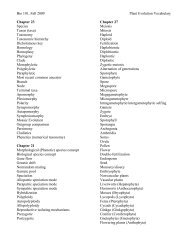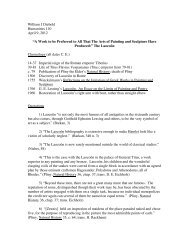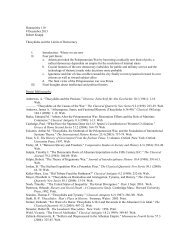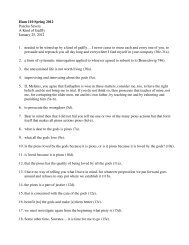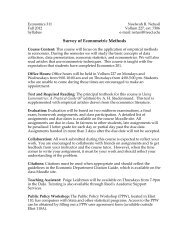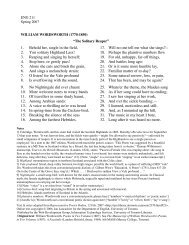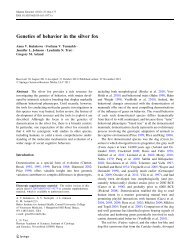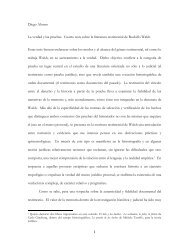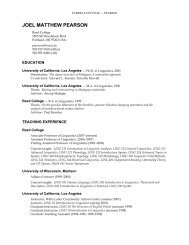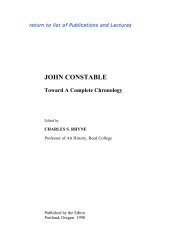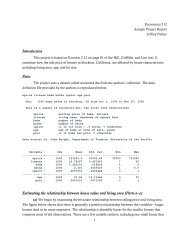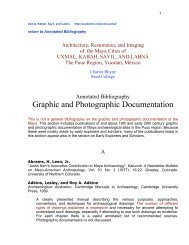REED COLLEGE SCIENCE OUTREACH PROPERTIES OF MATTER
REED COLLEGE SCIENCE OUTREACH PROPERTIES OF MATTER
REED COLLEGE SCIENCE OUTREACH PROPERTIES OF MATTER
You also want an ePaper? Increase the reach of your titles
YUMPU automatically turns print PDFs into web optimized ePapers that Google loves.
8<br />
3. Ask the students how matter can change from one state to another. Explain to the<br />
students that solids can melt into a liquid and then evaporate into a gas if heat is<br />
added to the matter. Tell students that all matter can melt and evaporate; it just has to<br />
be very hot sometimes. Remind students that if matter looses heat it can also condense<br />
into a liquid and freeze into a solid. You might want to have the students fill out the<br />
vocabulary section in “My Science Toolbox” at this point.<br />
Demonstration (15 Minutes):<br />
4. Today’s activity will start with a demonstration to introduce students to some of the<br />
properties of matter that they will learn about this spring.<br />
5. Find a place where the entire class can see you perform the demo. After donning your<br />
safety gear, place a graduated cylinder inside a tray to catch any spills. Fill the cylinder<br />
halfway with cabbage juice. Briefly brainstorm some of the juice’s properties (color etc.).<br />
6. Then, bring out a piece of dry ice and discuss the dry ice’s properties. Be sure to point<br />
out the change in states as the dry ice sublimates from solid to gas. Next drop the ice<br />
into the cabbage juice and ask the students to point out changes in the properties of the<br />
juice. Tell the students that for the next several weeks we will learn more about the<br />
properties of matter and how different types of matter interact with each other.<br />
Freezing Experiment (20-25 Minutes):<br />
7. Tell students that they are now going to start an experiment about freezing. Explain<br />
the concept of freezing point and how the salt lowers the freezing point of water. Tell<br />
students that different types of matter freeze, evaporate, melt, etc. at different<br />
temperatures. For example, water usually freezes at 32˚F or 0˚C. However if you add<br />
salt, it changes the properties of the water so that it will start melting will be lower (the<br />
amount of salt will determine the exact melting/freezing point).<br />
½ cup fruit juice<br />
2 cups ice<br />
1 Tbs salt<br />
Sorbet in a Bag<br />
1. Pour the juice into a plastic baggie that has a zipper. Close the bag.<br />
2. Add the ice, and salt to a larger bag.<br />
3. Place the bag of juice inside the baggie containing the ice, salt and water.<br />
4. Shake, shake, shake the bag until the sorbet is the consistency you want. Remove<br />
the inner bag, scoop out your frozen treat, and enjoy!<br />
How It Works<br />
Salt, or sodium chloride, dissociates into sodium and chloride ions. These ions act as<br />
impurities in the water lowering its freezing point. Energy is absorbed from the<br />
environment (the sorbet) as the ice changes phase into water, which can't release the<br />
energy by solidifying back into ice. Therefore the sorbet keeps getting colder as the<br />
ice melts.



